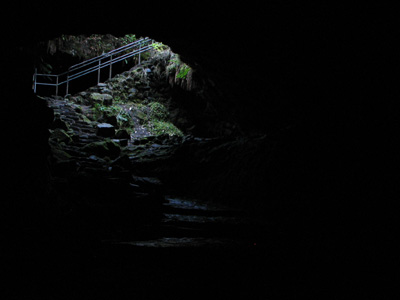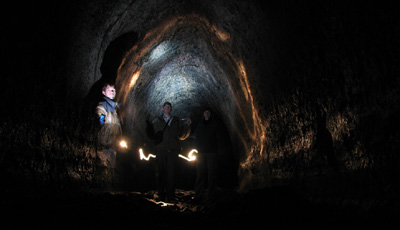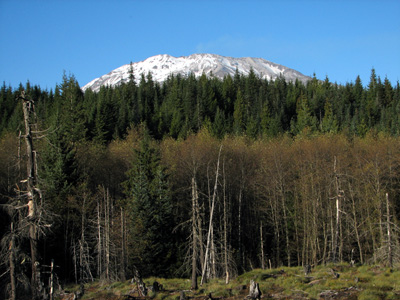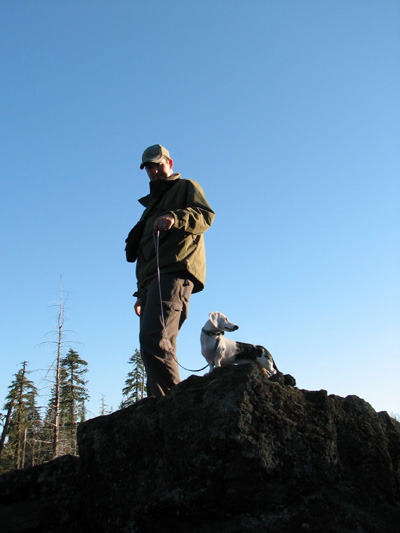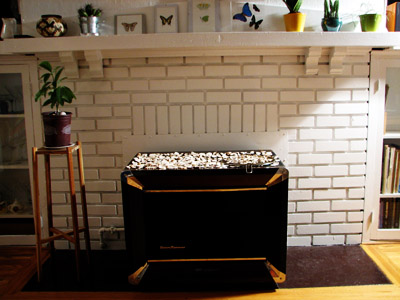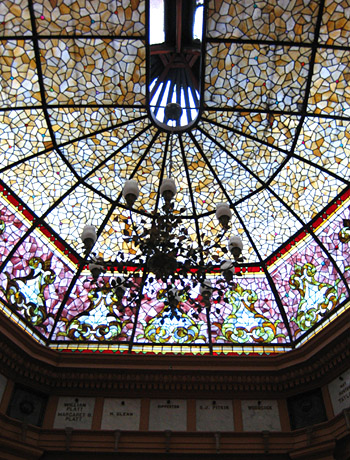
The weather in Portland turned from ‘Suddenly Winter Already Haha You Suck’ to ‘A Little More Summer After All Score Ten Points.’ It’s been great. We had already started to fall into early hibernation mode in our apartment, spending too many hours on the internet and baking too many treats in order to harvest the warmth of the oven. The dark days lasted three weeks and then it just got shockingly sunny again. So now, our patterns have shifted back into too many hours on the internet in the mornings, then Excursions to take advantage of all that free vitamin D (one never knows what two years in the tropics might have done to our tolerance… gotta get that stuff when you can is what I’m thinking), then maybe a batch of brownies to take advantage of the oven heat because in reality, it might be sunny, but it is freaking COLD out there.
Increasingly, these excursions are tethered by the pregnant lady to bathroom proximity, but Portland is really a very public toilet friendly kind of town (at least, I haven’t yet had to pitch a fit to use anyone’s “customers only” restroom) and we still have lots of exploring room. Last week, at Hans’ suggestion (based upon Chuck Palahniuk’s Portland guide), we sought out the very immense and labyrinthine “City of the Dead,” the Portland Memorial Mausoleum. Ironically, only the day before, Joshua and I had taken a long walk from one end of Oaks Bottom park to the Sellwood Bridge and at one point, you pass by a marshy pond with a gray, several-story building looming over it on the hill. One side of the building looks like an abandoned power plant office building (dingy, block-like, oppressive) and the other side has more deco features (rounded facades, many-paned windows, moss); in the middle of the two halves is a fading, several-story high mural of a great blue heron. We hypothesized for much of our walk as to what the building could be. We didn’t make the connection until we got inside the mausoleum and looked out the back windows to see the pond and bike path.
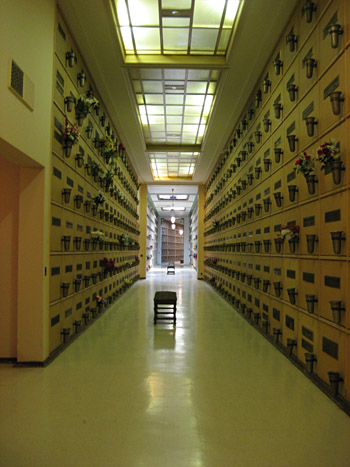
[One of many, many corridors.]
We visited on a weekday, middle of the day, and saw no one outside around the grounds or inside. Around the front of the building (from the front, the building only appears to be a few stories—it is in the back that it descends down the hillside and is all of maybe seven stories altogether), there are manicured grounds and winding concrete paths, plus a small pond filled with squawking geese. We felt like we were trespassing since we hadn’t read the book description of what we were about to see and Hans really had no clue either what to expect; we were surprised to find the doors unlocked.
The second you enter, everywhere you look, you see large marble panels with names etched in them covering the walls, floor to ceiling, and in the middle of each is a built-in flower-holder. I didn’t see any real flowers in any of the flower holders and many of them are empty. There was immediately a long hallway (covered in marble panels) and little roomlets along the sides, all full of tomb markers. We wandered around this floor for a while; there were some fountains and statues of various religious figures, mini chapels, and boxes of kleenex unceremoniously stashed in the corners or at major hallway intersections. There is also furniture here and there—chairs and couches (with kleenex boxes) that look like they came from some of the dead inhabitant’s estate sales. We finally found some stairs and descended four or five stories and entered a section of mausoleum from the fifties. Here the tomb covers were not marble, but some bizarre composite and the built-in vases were made to look as though they were brass. We turned another corner and the tombs turned to molded concrete indentations. These gave you a little shelf to place your memorabilia, but most of these people had been dead for a very long time and memorabilia generally took the form of green molded glass vases (empty) or strange ceramic bric-a-brac.
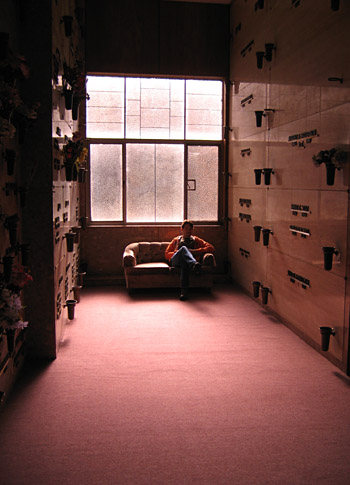
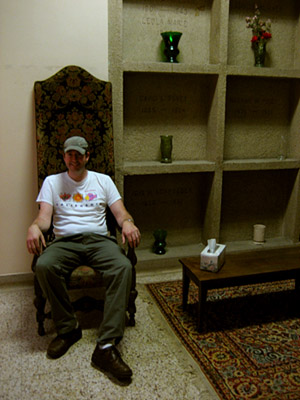
[Joshua and Hans try out some of the furnishings.]
I should also note that there are a lot of sinks in this building, all of them different, and all of them weird. They are dingy, ill-fitted sink units sitting in nooks, often with a mop or bucket leaning against the wall, rust stains from the drips, and never any curtain or door.
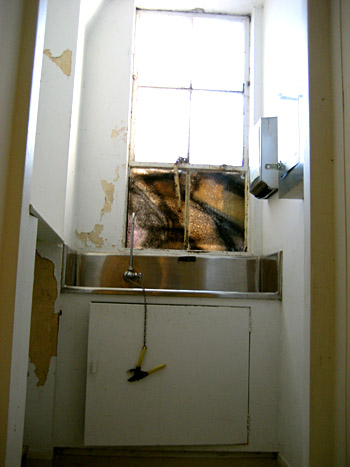
[Sink: Featuring Clippers on Leash]
We wandered the length of the building before heading back up a story or two. Curiously, we noticed far more ceiling water damage in the lower stories than the upper stories (leaky sink problems?). The tomb coverings got smaller; instead of being two feet square or more, they were maybe the size of a manila file folder. We found some very small ones down one dark hallway that looked just like post office boxes with little doors and some other small ones that just had copper plates with the names etched in them (some missing). Finally we found a very cool section of the building (this must be the part that looked deco from the outside) with stained glass windows, patinaed metal and beveled glass doors enclosing the remains. Urns were one of a set of perhaps ten different options (oval-shaped aluminum-like vases, leather cylinders) and to display them nicely within their glass cupboards, fake leatherbound books were used as lifters over pieces of velvet rumpled just so.
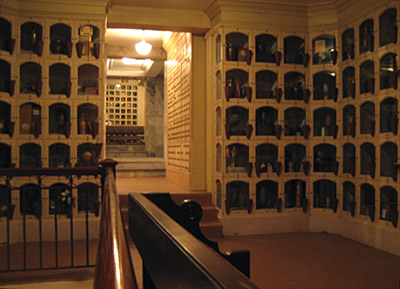
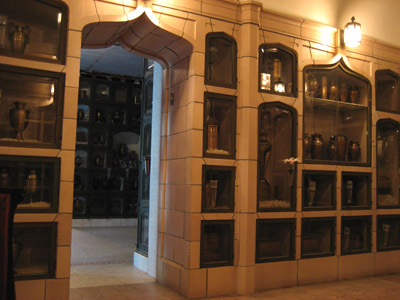
[1920s and 30s rooms]
We probably spent a good hour or two wandering around before deciding we needed to get back out to the vitamin D. The place really is huge, with something like 60,000 tombs and supposedly room for twice that many more. It is also very cold inside—not a good place to stop and sit around; best to keep moving, keep your circulation going. We spent the rest of the day wandering around in Forest Park, a place so dank and wet, even mushrooms won’t grow. Then we went home and made gingerbread.
